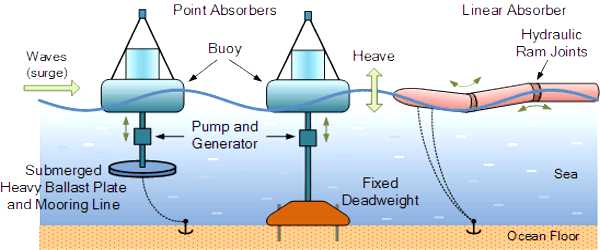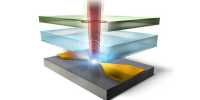Traditional energy harvesting technologies, such as photovoltaic panels and wind turbines, have several limitations. In the absence of daylight and wind, neither can provide any power. A potential solution for ocean buoys is all around us: wave energy. The ocean’s waves, which are abundant, predictable, and consistent, can be used to power navigation buoys. Researchers created sphere-based triboelectric nanogenerators that can be directly incorporated into navigational buoys to generate electricity from ocean waves. Look no further than the ocean for a power source for buoys.
Cátia Rodrigues of the University of Porto will discuss the prospects of using power generators in the ocean to address the energy concerns of marine exploration during the AIP Publishing Horizons — Energy Storage and Conversion virtual conference, which will be held Aug. 4-6. During the three-day conference, the presentation “Performance of triboelectric nanogenerators based on rolling spheres motion under realistic water wave conditions” will be available.
Researchers have developed sphere-based triboelectric nanogenerators that can be incorporated directly into navigational buoys to provide electricity from ocean waves.
Traditional energy harvesting technologies, such as photovoltaic panels or wind turbines, have several limitations, the most significant of which is their intermittency and inability to operate continuously. In the absence of daylight and wind, neither can provide any power.
The ocean is constantly in motion, and the effects of changing sea levels are enormous. Ocean energy has a significant impact on storm system development, shipping safety and shipping routes, recreational boating, surfing, and swimming, as well as fishing and other methods of obtaining seafood. Wind-driven currents on the ocean’s surface extend down into the depths. Sensor buoy data can provide critical information about ocean properties like color, sea height, temperature, currents, and pollution.
A potential solution for ocean buoys is all around us: wave energy. The ocean’s own waves, which are abundant, predictable, and consistent, can be used to power navigation buoys. “However, due to a lack of technological consensus, uncompetitive energy generation costs, and the irregular and low-frequency nature of waves at sea,” Rodrigues said.

The oceans are an appealing source of renewable energy. Waves alone generate 32,000 terawatt-hours of natural energy per year; for comparison, the entire world consumes approximately 23,000 terawatt-hours per year. There’s also the power of currents, tides, and thermal energy to consider. Despite decades of research, however, the motion of the ocean has proven difficult to capture. Wave patterns are unpredictable, seawater corrodes metal-generating machinery, and wave energy is dispersed in three dimensions at the same time (up-down, forward-backward, and left-right).
The researchers created sphere-based triboelectric nanogenerators (TENGs), which convert mechanical motion into electrical power and can be directly incorporated into navigational buoys to provide electricity from ocean waves.
Solar panels and batteries are commonly used in existing power systems for remote sensor buoys and other remote ocean platforms. These systems would benefit from significant upgrades or replacement. Poor performance in cold and/or dark latitudes, insufficient power to operate the most advanced electronic equipment, high maintenance, and replacement costs, loss due to theft and vandalism, and battery disposal are all issues. Power generation from ambient ocean wave energy is a natural way to supplement or replace any of these electrical-power-generation systems.
When the TENGs were tested in real conditions on a 1:8 scale, they discovered that maximum voltages can be generated when waves occur at heights of 0.1 meters approximately every 2.6 seconds – close to the buoy’s natural period. Even when the waves are inconsistent and slow, TENGs have a much higher energy conversion efficiency than standard generators.
“In terms of wave energy, some relevant challenges to the viable deployment of conversion technologies remain,” Rodrigues said. “These challenges are mostly related to the irregular nature of waves and the distribution of energy in both direction and frequency.” The group intends to test a prototype in Figueira da Foz, a Portuguese seaport.














